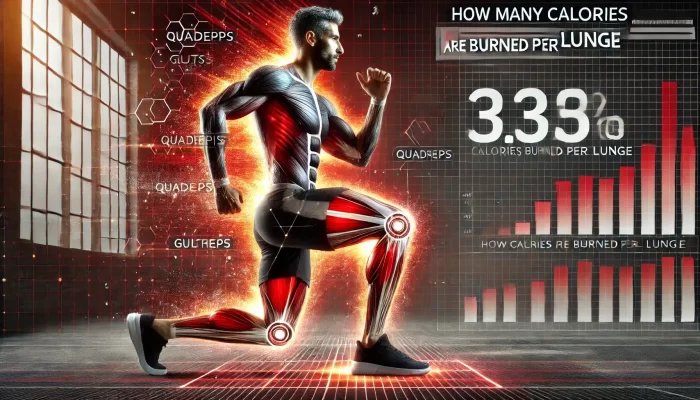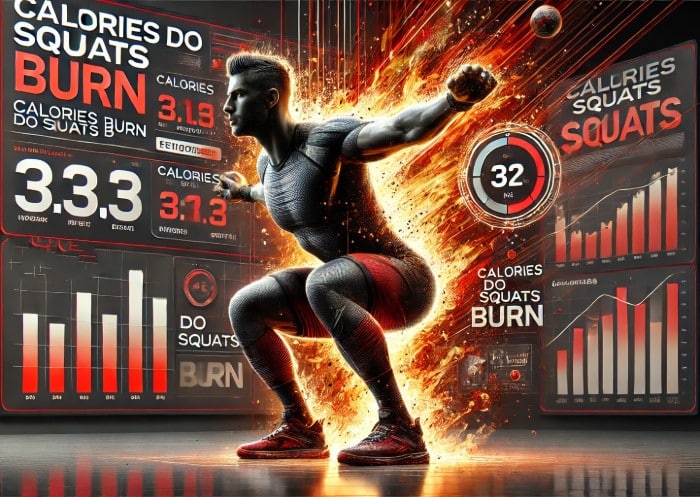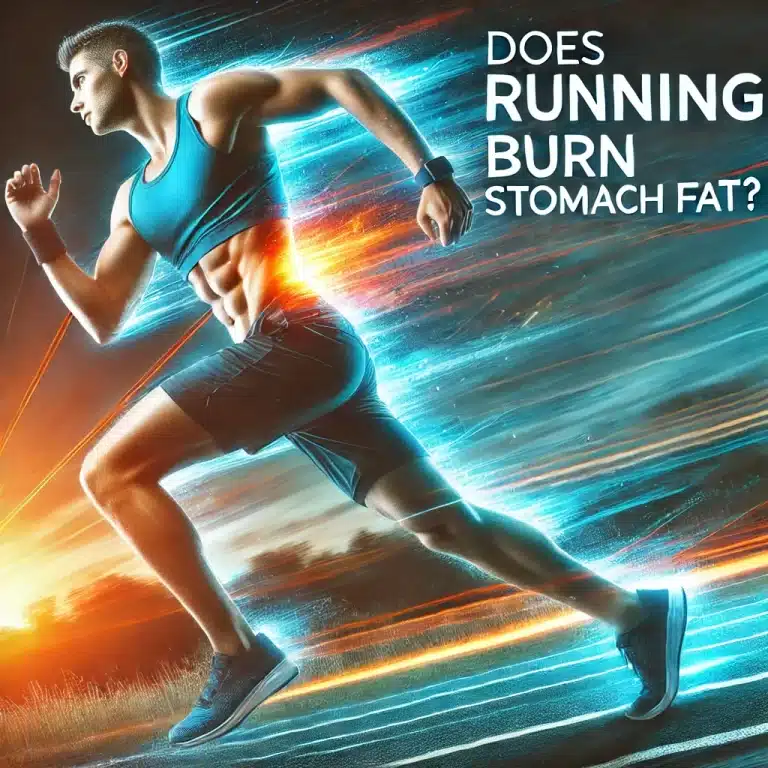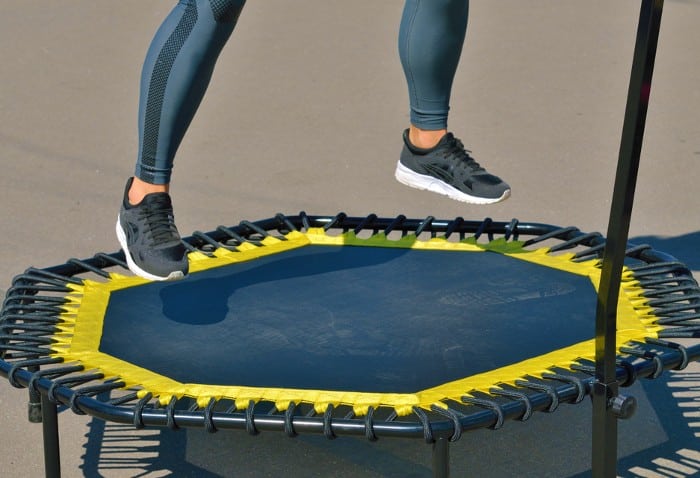How Many Calories Are Burned Per Lunge? A Data-Backed Guide
Lunges are a staple lower-body exercise, known for their ability to build strength, improve balance, and enhance overall athleticism. Unlike many other lower-body movements, lunges require a combination of stability, coordination, and endurance, making them a powerful calorie-burning exercise. Whether performed with body weight, added resistance, or as part of a high-intensity routine, lunges can help boost energy expenditure and contribute to weight management and cardiovascular fitness.
Understanding how many calories lunges burn is essential for those looking to optimize their workouts, lose fat, or improve endurance. While no two individuals will burn the same number of calories due to differences in body composition and metabolism, we can use scientific data to estimate energy expenditure and tailor training for maximum efficiency. This guide explores the factors that influence calorie burn during lunges, how different variations affect energy expenditure and strategies to help you get the most out of this highly effective movement.
Estimating Caloric Expenditure During Lunges:
Determining the number of calories burned while performing lunges involves considering multiple factors, including body weight, intensity, duration, and individual metabolism. While precise measurements require tools like indirect calorimetry or metabolic testing, general estimates can be derived using research-backed data on oxygen consumption during resistance training.
A study published in the Journal of Strength and Conditioning Research examined oxygen consumption for various resistance exercises, including lunges. The findings indicated that lunges have an average oxygen consumption rate of approximately 17.3 ± 2.6 milliliters per kilogram per minute (ml·kg·min). Since 1 liter of oxygen consumption equates to approximately 5 calories burned, this data can be used to estimate the total caloric expenditure during lunges.
Example Calculation:
Let’s apply these values to estimate how many calories a person burns during lunges based on their weight and duration of exercise.
- Body Weight: 70 kg (approximately 154 lbs)
- Oxygen Consumption Rate: 17.3 ml·kg·min
- Duration: 10 minutes
- Total Oxygen Consumption: 17.3 ml·kg·min × 70 kg × 10 min = 12,110 ml
- Convert to Liters: 12,110 ml ÷ 1,000 = 12.11 liters
- Calories Burned: 12.11 liters × 5 calories/liter = 60.55 calories
From this calculation, a 70 kg individual performing lunges for 10 minutes burns approximately 60.55 calories. However, real-world results may differ based on factors such as exercise intensity, range of motion, and individual metabolic efficiency.
To better illustrate how body weight influences caloric burn, here’s an estimated calorie expenditure chart based on weight:
| Body Weight | Calories Burned (10 min of lunges) |
|---|---|
| 120 lbs (54 kg) | ~47 calories |
| 150 lbs (68 kg) | ~59 calories |
| 180 lbs (82 kg) | ~70 calories |
| 210 lbs (95 kg) | ~81 calories |
These numbers provide a baseline estimate, but calorie burn can be significantly higher with increased resistance, explosive movements, or reduced rest times between sets.
Factors That Influence Calories Burned During Lunges:
Several key factors determine how many calories an individual burns while performing lunges. These factors influence energy expenditure by altering the intensity, duration, and engagement of various muscle groups.
1. Body Weight and Composition
Heavier individuals tend to burn more calories during lunges because they require more energy to move their body mass through the movement. Muscle mass also plays a role, individuals with more lean muscle tissue generally burn more calories even at rest due to a higher metabolic rate.
2. Exercise Intensity and Speed
The pace at which lunges are performed directly impacts the number of calories burned. Slow, controlled lunges engage stabilizer muscles more but may not elevate the heart rate as much as faster, high-rep lunges. High-intensity variations, such as jumping lunges, demand greater cardiovascular effort and significantly increase calorie burn.
3. Added Resistance and Weight
Performing lunges with additional weight, such as dumbbells, kettlebells, or a weighted vest, increases the challenge for the muscles and leads to higher caloric expenditure. Weighted lunges force the body to work harder to stabilize and move through the range of motion, increasing the energy demand per repetition.
4. Range of Motion and Depth
Lunging deeper engages the glutes, quadriceps, and hamstrings more intensely, leading to a higher energy requirement. Partial lunges or shallow movements burn fewer calories since they do not fully activate the target muscle groups.
5. Total Workout Duration and Repetitions
A higher number of repetitions and sets over a longer workout duration naturally results in more calories burned. However, quality over quantity is key, maintaining proper form ensures that the right muscles are engaged, maximizing efficiency and preventing injury.
6. Rest Periods Between Sets
The amount of time spent resting between sets affects overall calorie burn. Shorter rest periods (30 seconds or less) keep the heart rate elevated, leading to greater energy expenditure. On the other hand, longer rest periods (60+ seconds) allow for heavier lifting but may reduce the overall calorie burn during a session.
7. Type of Lunge Variation Used
Different lunge variations influence the number of calories burned:
- Jumping Lunges – One of the most intense variations, requiring explosive movement that significantly increases heart rate and calorie expenditure.
- Walking Lunges – Keeps the body in continuous motion, leading to higher overall caloric burn compared to stationary lunges.
- Bulgarian Split Squats – A unilateral exercise that requires greater balance and muscle activation, increasing energy demand.
- Lateral Lunges – Engages different stabilizing muscles, increasing core involvement and calorie burn.
8. Metabolic Rate and Individual Fitness Level
A person’s basal metabolic rate (BMR) affects how many calories they burn during exercise. Individuals with a higher metabolic rate or greater muscle mass tend to burn more calories even during lower-intensity movements. Conversely, beginners may burn more calories initially as their muscles work harder to adapt to the exercise.
By understanding these factors, individuals can optimize their lunge workouts to maximize calorie burn and overall fitness results. Whether the goal is fat loss, muscle building, or endurance improvement, adjusting intensity, weight, duration, and movement variations can make lunges a powerful tool for burning calories efficiently.
How to Maximize Caloric Burn with Lunges?

To get the most out of your lunge workouts and ensure you’re burning as many calories as possible, you need to focus on intensity, variety, and efficiency. Small adjustments in how you perform lunges can make a huge difference in caloric expenditure and overall workout effectiveness.
1. Increase Your Training Volume
One of the simplest ways to burn more calories with lunges is to increase the number of reps and sets. However, instead of just mindlessly doing more lunges, a structured approach is key. Try progressively overloading your workouts by gradually increasing the number of reps, adding weights, or adjusting the total number of sets per session. This ensures your body keeps adapting, leading to more muscle engagement and greater calorie burn over time.
2. Add Resistance with Weights
If bodyweight lunges are becoming too easy, introducing dumbbells, kettlebells, or a weighted vest will significantly ramp up the intensity. When you add resistance, your muscles have to work harder, requiring more oxygen and energy, which in turn boosts total caloric burn. Studies show that resistance training increases post-exercise oxygen consumption, meaning your metabolism stays elevated even after the workout is over.
3. Reduce Rest Time Between Sets
Shortening rest periods is a simple yet effective way to keep your heart rate elevated, turning lunges into an endurance-building, fat-burning movement. Instead of waiting 60 seconds between sets, try reducing your rest time to 30 seconds or less. This forces your body to work under fatigue, increasing cardiovascular output and enhancing total calorie burn.
4. Use High-Intensity Lunge Variations
Not all lunges are created equal. If your goal is to maximize calorie burn, certain lunge variations demand more balance, power, and cardiovascular effort than others. Consider incorporating the following:
- Jumping Lunges – These require explosive power, increasing calorie burn significantly per rep.
- Walking Lunges – The continuous forward movement elevates heart rate and improves endurance.
- Bulgarian Split Squats – This variation isolates each leg and challenges balance, leading to higher energy output.
- Curtsy Lunges – Engages stabilizer muscles and increases core activation, helping burn more calories.
By mixing in these variations, you can keep your workouts dynamic and challenging, ensuring that your muscles and metabolism don’t plateau.
5. Incorporate Lunges into a Circuit or HIIT Workout
If your goal is maximum fat loss, integrating lunges into a high-intensity interval training (HIIT) routine is one of the best ways to increase overall calorie burn. Instead of performing lunges in isolation, combine them with full-body movements such as burpees, jump squats, kettlebell swings, or push-ups. A 30-minute HIIT session that includes lunges can burn anywhere from 250 to 500 calories, depending on the intensity and resistance used.
6. Focus on Time Under Tension (TUT)
Time under tension (TUT) refers to the duration your muscles are engaged during an exercise. Instead of quickly moving through each rep, slow down the eccentric (lowering) phase of the lunge. Take three to five seconds to descend before returning to the standing position. This method:
- Forces more muscle engagement per rep
- Increases overall calorie expenditure
- Builds endurance and control, preventing injuries
7. Engage More Muscle Groups
Lunges are already a compound movement, but you can amplify calorie burn by incorporating more muscle groups. Try these modifications:
- Goblet Lunges – Holding a kettlebell at chest height engages your core and upper body.
- Overhead Lunge Press – Adding an overhead press at the top of each lunge turns this into a full-body exercise.
- Side Lunges with Resistance Bands – Challenges the inner thighs and glutes, increasing muscle activation.
8. Perfect Your Form for Efficiency
Good form ensures that you’re activating the right muscles and maximizing calorie burn while minimizing injury risk. Here’s what to focus on:
- Step far enough forward so that your front knee stays behind your toes.
- Lower until your back knee is just above the floor to maximize range of motion.
- Keep your torso upright to prevent unnecessary strain on the lower back.
- Drive through your front heel to activate the glutes and hamstrings effectively.
A well-executed lunge will burn more calories per rep than a poorly executed one, so always prioritize form over speed.
9. Train on an Incline or Uneven Surface
Performing lunges on an inclined surface or using balance-focused equipment like a Bosu ball forces stabilizer muscles to work harder, increasing energy output. Some great variations include:
- Incline Walking Lunges – Activates the glutes and hamstrings while improving cardiovascular endurance.
- Lunges on a Balance Board – Engages the core and stabilizers, increasing muscle recruitment and calorie burn.
10. Extend Your Workouts with Active Recovery
Instead of standing still between sets, use active recovery exercises such as jump squats, high knees, or plank variations to keep your heart rate up. This technique ensures that you continue burning calories even when you’re not actively lunging, making your workouts more effective overall.
By implementing these strategies, lunges can become a highly effective calorie-burning exercise that not only strengthens your lower body but also contributes to overall fat loss and endurance. Whether your goal is to tone your legs, improve athleticism, or increase metabolic rate, optimizing your lunge routine with these techniques will help you achieve faster and more efficient results.
How do Lunges compare to Other Exercises for Caloric Burn?
Lunges are undoubtedly effective for building lower-body strength, improving balance, and burning calories, but how do they measure up to other popular exercises in terms of caloric burn? To answer this, it’s important to look at the intensity, muscle engagement, and metabolic demand of lunges compared to other movements.
Lunges vs. Other Lower-Body Exercises:
| Exercise | Calories Burned Per 10 Minutes (150 lbs person) |
|---|---|
| Bodyweight Lunges | 60-90 calories |
| Jumping Lunges | 90-120 calories |
| Squats | 70-100 calories |
| Deadlifts | 80-110 calories |
| Step-Ups | 85-115 calories |
| Leg Press | 50-80 calories |
As seen in the table, jumping lunges burn the most calories per 10-minute session among common lower-body exercises, followed closely by step-ups and squats. This is because dynamic movements like jumping lunges require more explosive energy, activating both fast-twitch and slow-twitch muscle fibers, leading to higher oxygen consumption and energy expenditure.
Deadlifts, on the other hand, are a highly effective strength-building movement but burn slightly fewer calories per minute because they involve controlled repetitions rather than continuous movement. Squats remain a solid calorie burner, but since they don’t require as much stability and range of motion as lunges, they generally burn slightly fewer calories per minute when performed at a moderate pace.
Lunges vs. Full-Body and Cardio Workouts:
| Exercise | Calories Burned Per 10 Minutes (150 lbs person) |
| Jump Rope | 120-150 calories |
| Running (6 mph) | 100-120 calories |
| Rowing (Moderate) | 80-110 calories |
| Burpees | 120-160 calories |
| Cycling (Moderate) | 90-120 calories |
| Lunges (HIIT Style) | 100-130 calories |
When comparing lunges to cardiovascular and full-body movements, lunges still hold their own especially when incorporated into a high-intensity interval training (HIIT) routine. Lunges performed at high intensity with minimal rest periods can burn as many calories as running or cycling while also building strength and mobility, making them a highly efficient choice for fat loss and muscle development.
However, if pure calorie burn is the goal, activities like jumping rope, burpees, and running at higher speeds will generally burn more calories per minute. These movements involve continuous, high-speed motion that keeps the heart rate elevated for extended periods, leading to a greater overall calorie expenditure.
Final Thoughts: Are Lunges Effective for Burning Calories?
Lunges are a highly effective lower-body exercise that contributes to both muscle development and caloric burn. The exact number of calories burned per lunge depends on individual factors such as weight, intensity, and resistance, but even bodyweight lunges contribute significantly to energy expenditure.
For optimal results, incorporate different lunge variations, add resistance when possible, and include them in high-intensity circuits. Whether your goal is weight loss, improved athletic performance, or muscle toning, lunges should play a central role in your fitness routine.
By understanding how lunges contribute to caloric burn and employing strategies to maximize efficiency, individuals can tailor their workouts to meet their personal fitness goals while enjoying the numerous benefits this versatile exercise provides.






